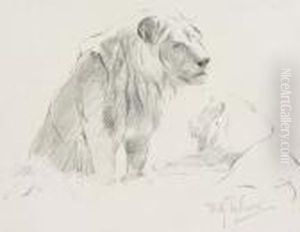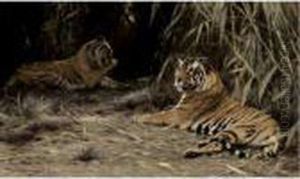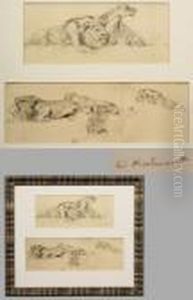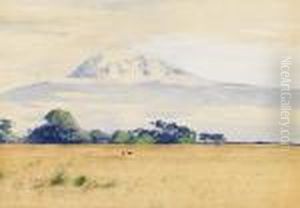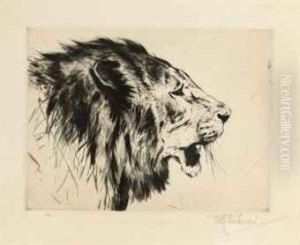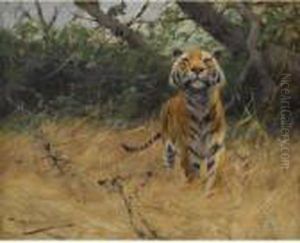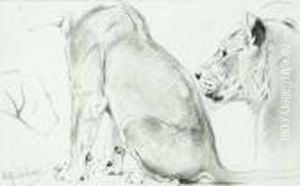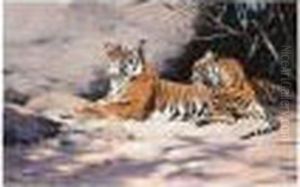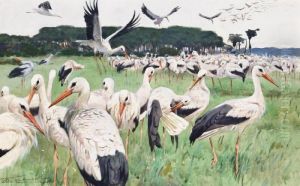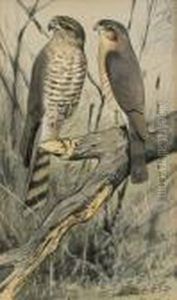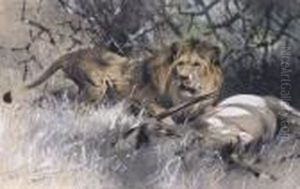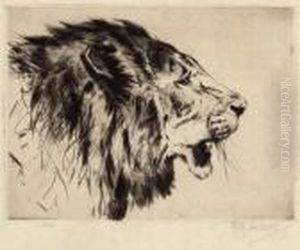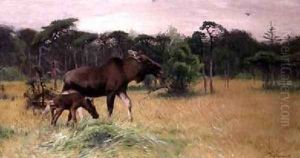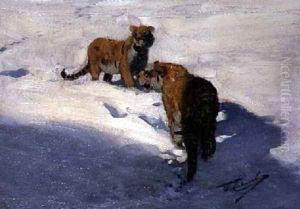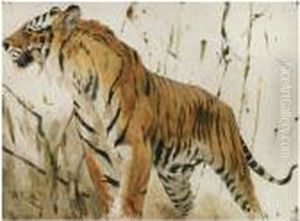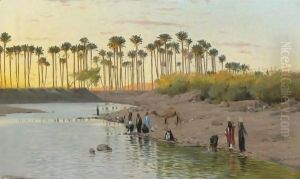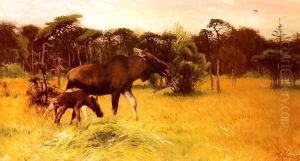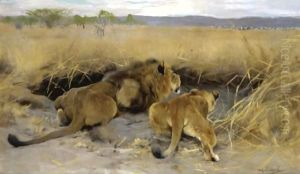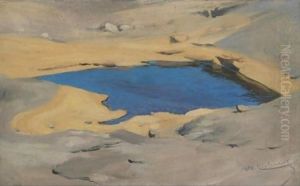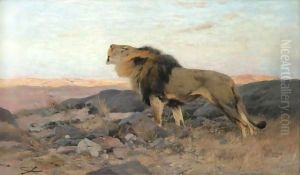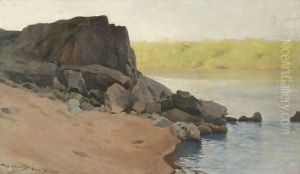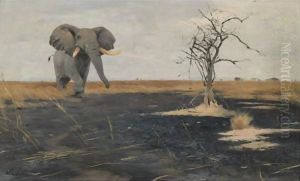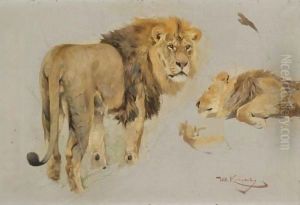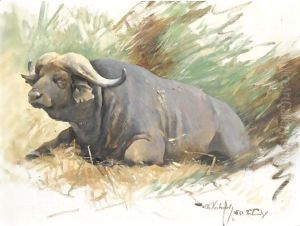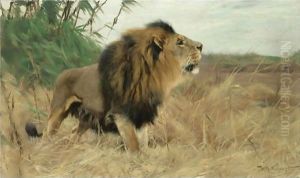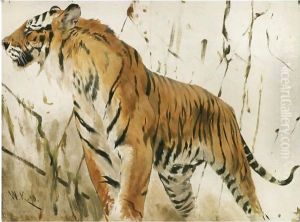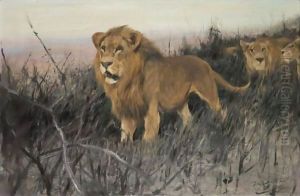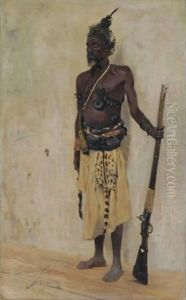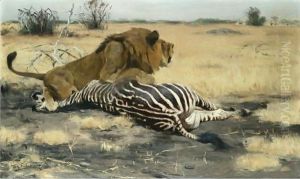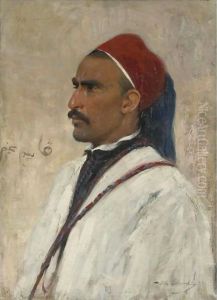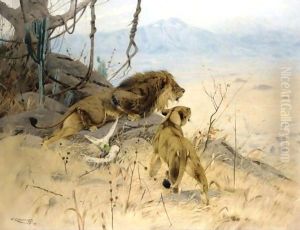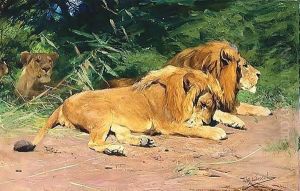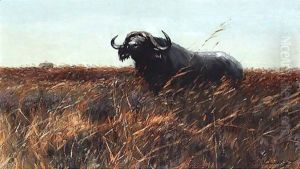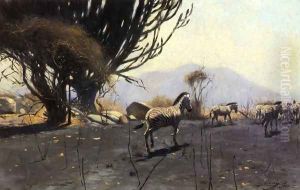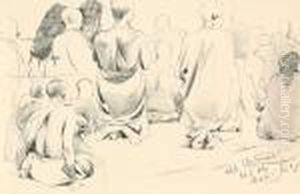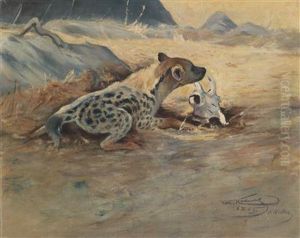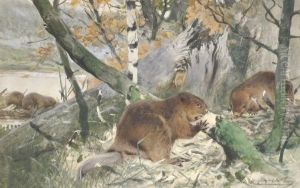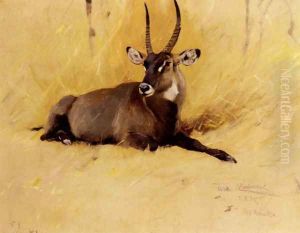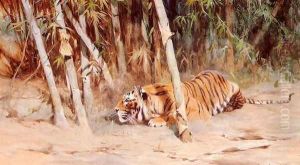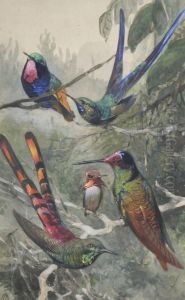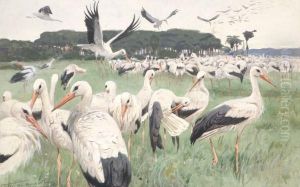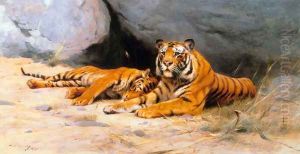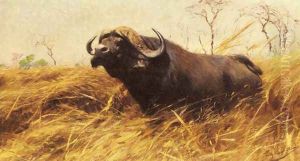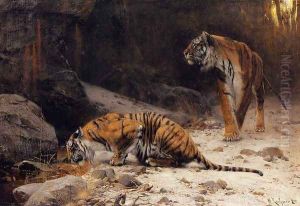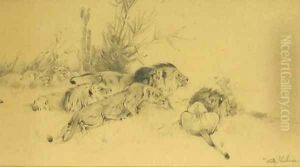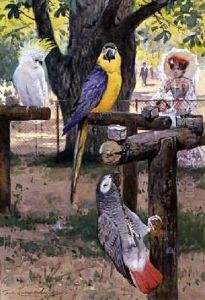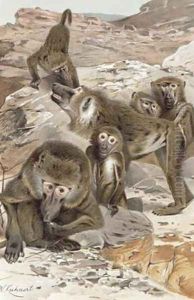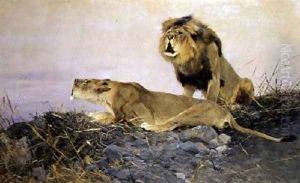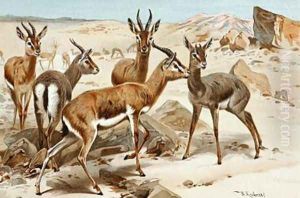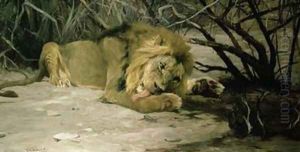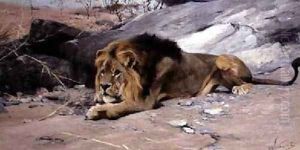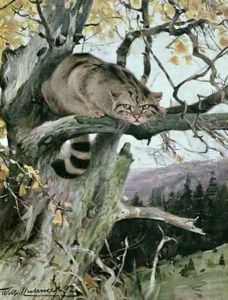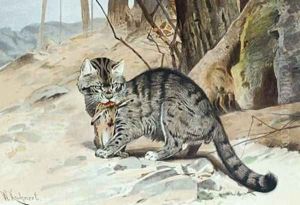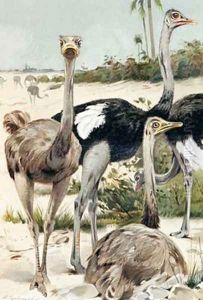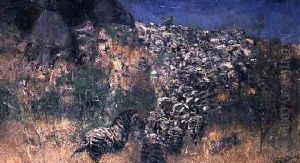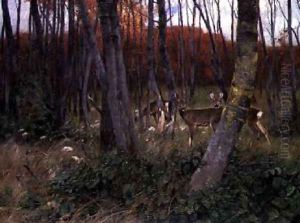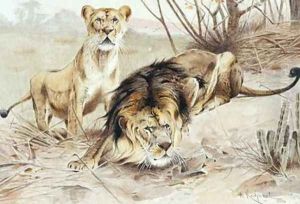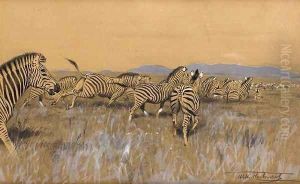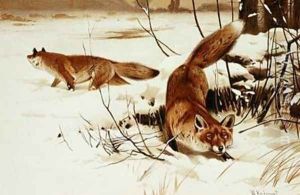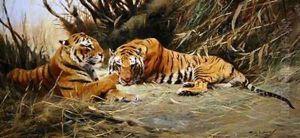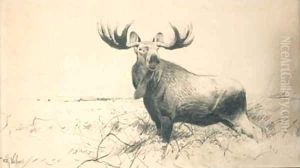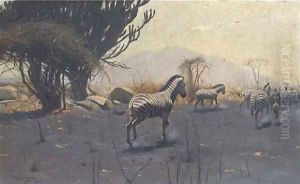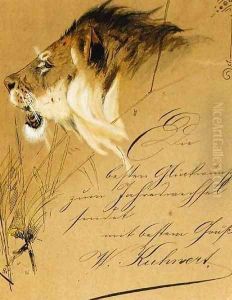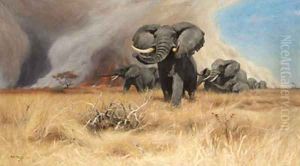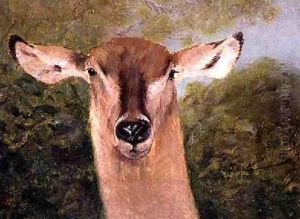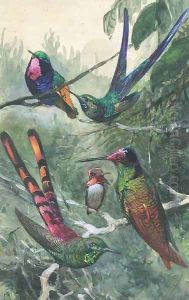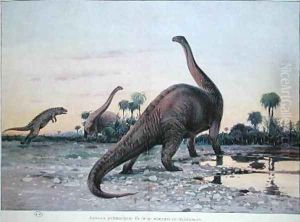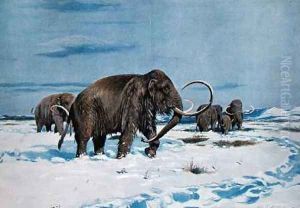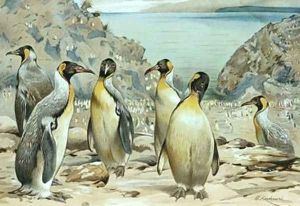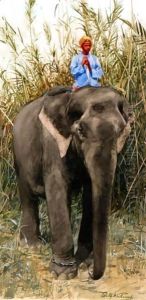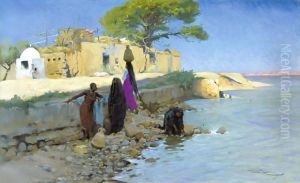Wilhelm Kuhnert Paintings
Wilhelm Kuhnert was a pioneering German painter, illustrator, and author, renowned for his remarkable ability to depict wild animals in their natural habitats. Born on September 28, 1865, in Oppeln, then part of the Kingdom of Prussia (now Opole, Poland), Kuhnert showed an early interest in the natural world and in art, which would shape his career and legacy. His fascination with animals and nature was evident from a young age, and he dedicated his life to combining these passions through his art.
Kuhnert received his formal art education at the Royal Academy of Arts in Berlin. However, his artistic vision extended far beyond the classroom. He was among the first European artists to travel extensively in Africa, seeking to study and paint animals in their natural environments. These expeditions, which began in the late 19th century, took him to remote areas of East Africa, including present-day Kenya and Tanzania. His travels provided him with firsthand observations and experiences that he translated into stunningly realistic and vibrant artworks.
Throughout his career, Kuhnert specialized in depicting the wildlife of Africa, earning him the nickname 'the painter of the lost world.' His works were characterized by their meticulous detail, accuracy, and lifelike representations, which were groundbreaking at the time. Kuhnert's paintings, drawings, and illustrations brought the African wilderness to the European audience, contributing significantly to their fascination with and understanding of a continent that was largely unknown to them.
In addition to his paintings, Kuhnert also authored several books on wildlife and his experiences in Africa, including 'Im Lande meiner Modelle' (In the Land of My Models) and 'Tierleben der Erde' (Animal Life on Earth), further cementing his reputation as an expert on African wildlife. His work had a profound impact on the field of wildlife art and influenced generations of artists and naturalists.
Wilhelm Kuhnert's dedication to portraying animals in their natural settings, combined with his artistic skill, made him a prominent figure in the world of wildlife art. He passed away on February 11, 1926, in Flims, Switzerland, but his legacy lives on through his contributions to art and conservation. Kuhnert's pioneering efforts not only advanced the genre of animal painting but also played a crucial role in promoting wildlife conservation and appreciation.
